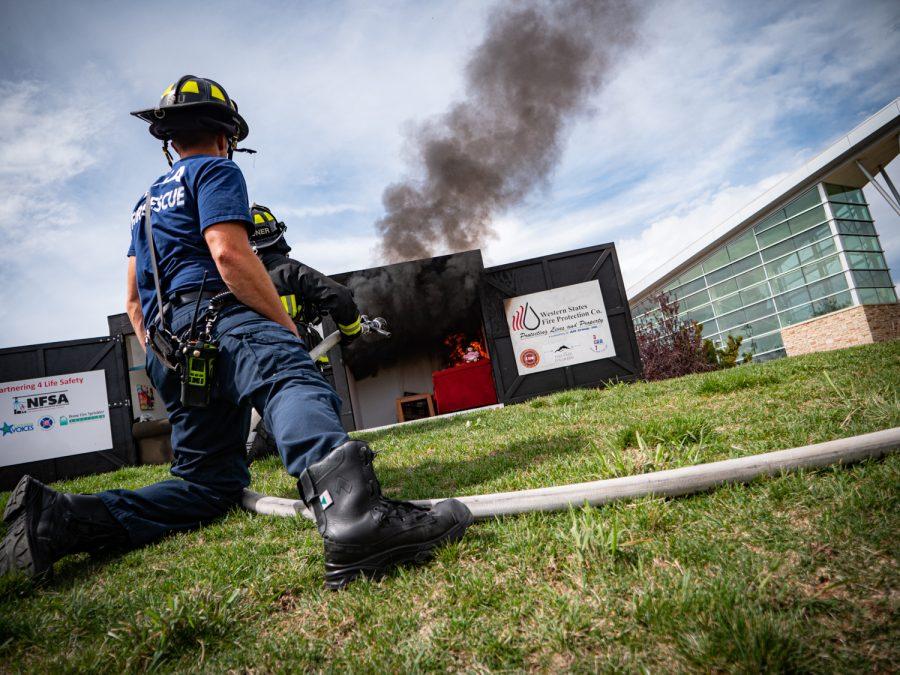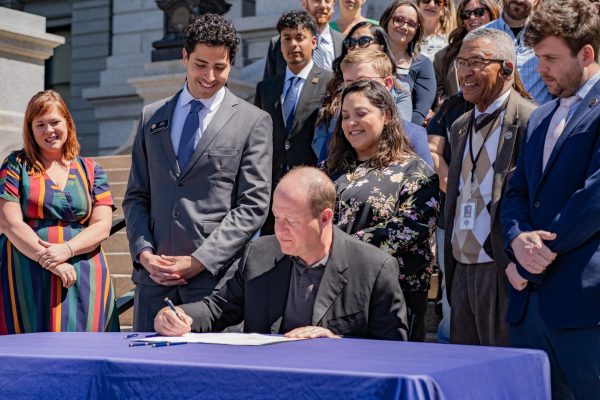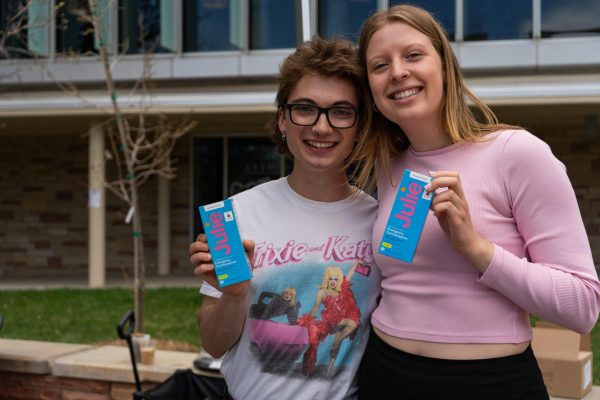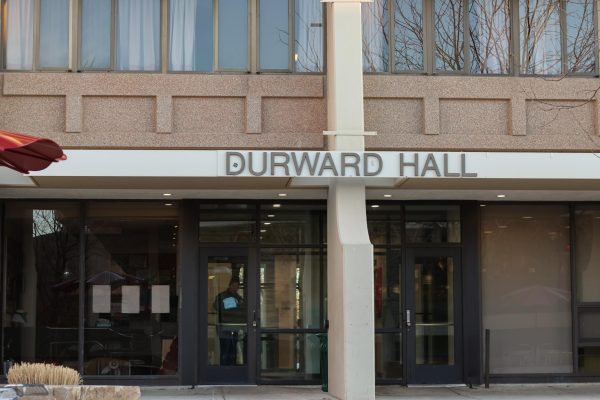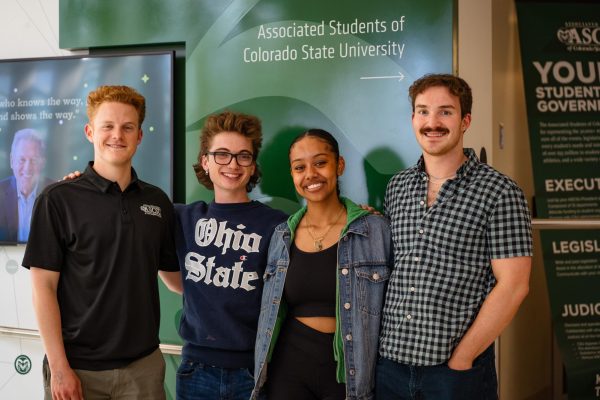Safety awareness month emphasizes education, community engagement
Collegian | Tri Duong
Firefighters from the Poudre Fire Authority demonstrate how to properly work the water hose near the Recreational center at Colorado State University Sept. 14.
September 15, 2022
Emergency response vehicles lined Meridian Avenue Wednesday afternoon, but there was no emergency to respond to on campus.
The Poudre Fire Authority, Northern Colorado Bomb Squad, Fort Collins Police Services SWAT and multiple other agencies visited Colorado State University Sept. 14 to engage with students as part of National Campus Safety Awareness Month.
Ad
Nicole Reed, the assistant safety coordinator for Housing & Dining Services Workplace Inclusion & Talent Management team, organized the event to provide “opportunities for students and staff and faculty to interface with (emergency responders) in different environments and learn a little bit more about what they do.”
HDS has previously held events for National Campus Safety Awareness Month, but this year, the university is organizing training and education opportunities on a wider scale, Reed said.
“This gives us an opportunity to engage with the student community and population on a positive note and be able to say, ‘Hey, if you see us out there, this is what we’re doing.’” –Gar Haugo, FCPS SWAT sergeant
“Safety spans physical, emotional and the mental realms that impact our staff, our guests and obviously our students,” Reed said. “And so we really wanted to highlight all of the wonderful things that we do as a university and all of the wonderful resources that we have available for our students and our staff and our faculty.”
At the event, emergency responders interacted with students, answered questions about their jobs and roles in the community, demonstrated how different equipment works and explained ways students can pursue careers in emergency response and law enforcement.
SWAT Sgt. Gar Haugo of FCPS said community engagement and education are important aspects of his job because so much of what a SWAT team does is often portrayed incorrectly and dramatized in popular culture and on the news.
“The students a lot of times don’t have experiences with us unless we show up, and if I show up on a street call to anything that you call for, you’re not happy to see me, right?” Haugo said. “Because either you did something or something bad happened to you. … This gives us an opportunity to engage with the student community and population on a positive note and be able to say, ‘Hey, if you see us out there, this is what we’re doing.’”
Haugo said FCPS SWAT responds to an average of slightly less than 60 calls per year, and he is the only full-time member of the team. Most calls are responses to “high-risk warrant service,” meaning if a police officer is serving an arrest warrant to a suspect and thinks the suspect could respond in a violent or dangerous manner, SWAT assists with the arrest.
In situations when SWAT goes out on a call, Haugo said they will weigh the circumstances to determine what needs to happen to have the safest outcome. If a suspect has a history of violence or if there are children or other family members involved, SWAT will use its presence to deter the suspect from attempting to take a hostage or use force to escape the situation.
“We train a lot for a hostage rescue situation, (but) we don’t encounter those very often,” Haugo said.
Ad
Also present was the Northern Colorado Bomb Squad. Jack Adams, a member of the squad and an officer with the Loveland Police Department, said the bomb squad engages in many education events because a lot of people might not know their local police department has a bomb squad unit.
“We respond to the cliche ‘suspicious package’ or pipe bomb, but mostly we do disposals,” Adams said. “We’ll get rid of fireworks that get confiscated or evidence, ammunition that has been confiscated, things like that. If you find C4 (plastic explosive) from Vietnam in Grandpa’s shed, we’ll come and take care of that. That’s a majority of what we’re doing.”
Reed said because everyone has different experiences with emergency responders, providing a space for the campus community to engage with local agencies in a different environment can help with understanding the role different emergency responders play in the community.
Other agencies present at the event included emergency medical services and the CSU Police Department.
Angela Gray, who works for CSU Risk Management & Insurance, was there to demonstrate how to complete hands-only CPR and tell students about CPR/AED first aid certification training available on campus.
Gray said students can receive CPR certification through the American Red Cross. The training is held in the General Services Building and requires a $50 fee. The risk management department also offers an online AED orientation, which can be accessed for free by using a CSU NetID.
To continue National Campus Safety Awareness Month, the university will offer multiple other training and informational sessions throughout September. The week of Sept. 19 will feature collegiate safety and include training on Title IX and the Clery Act, and the week of Sept. 26 will highlight interpersonal safety.
Reach Serena Bettis at news@collegian.com or on Twitter @serenaroseb.


